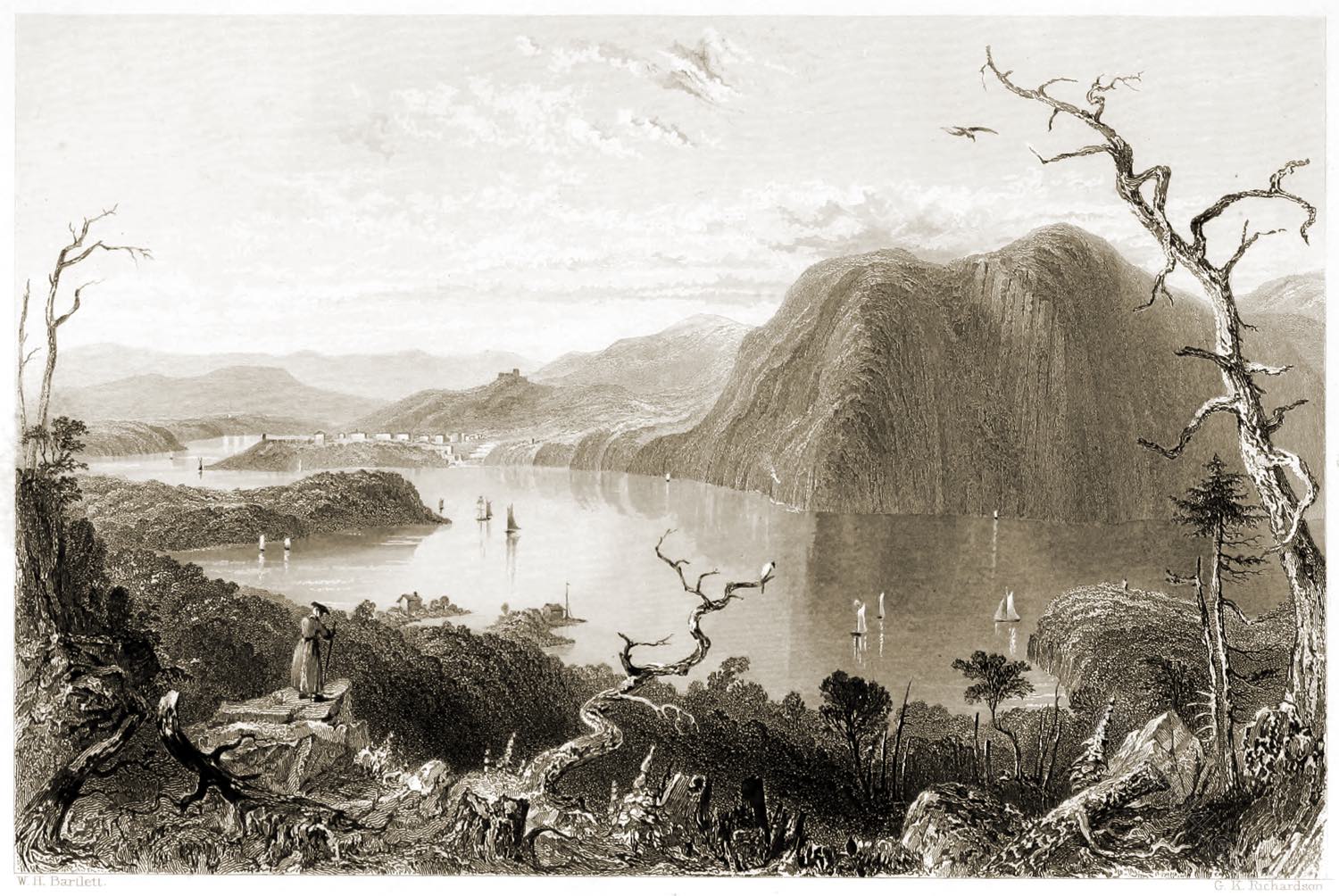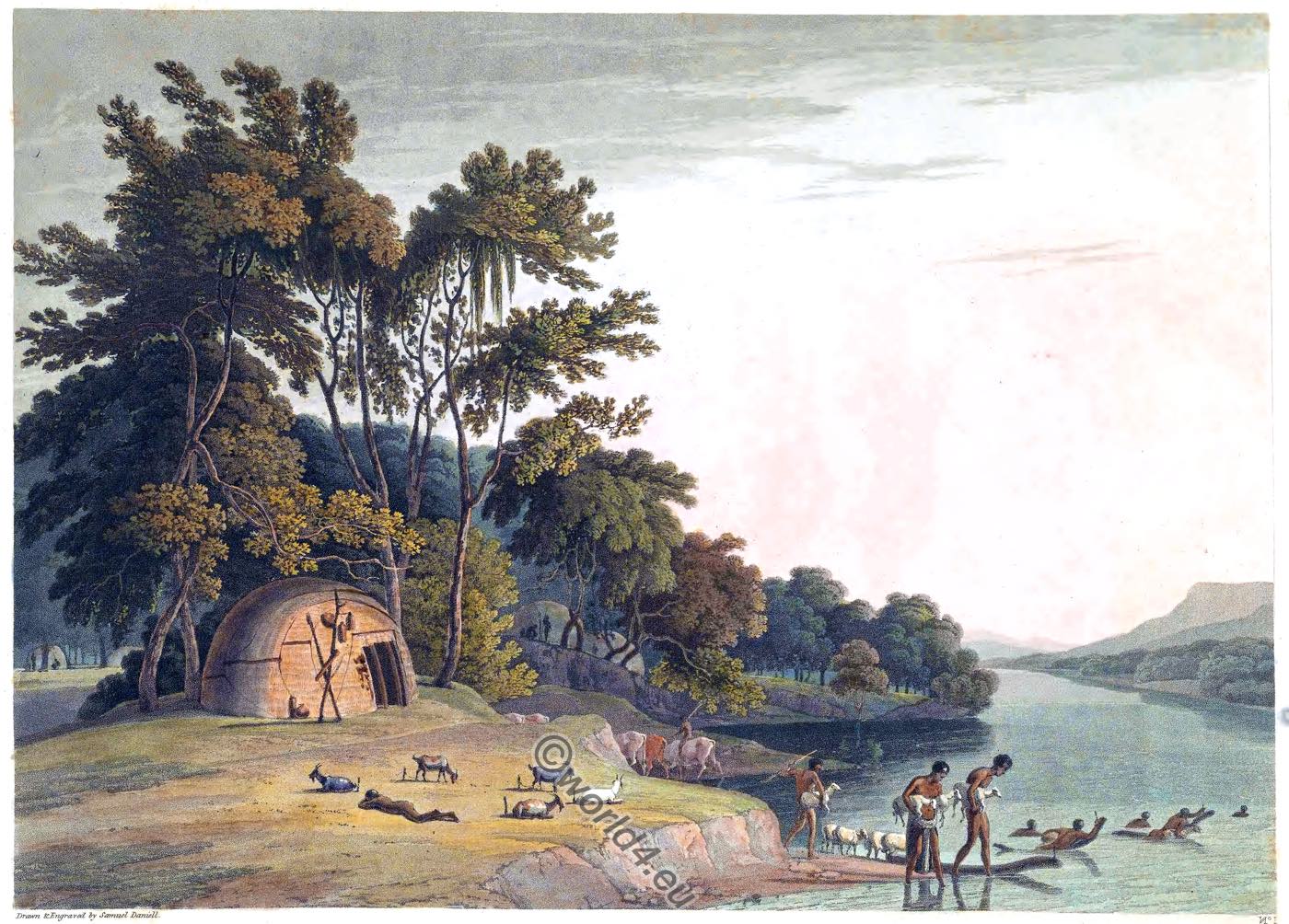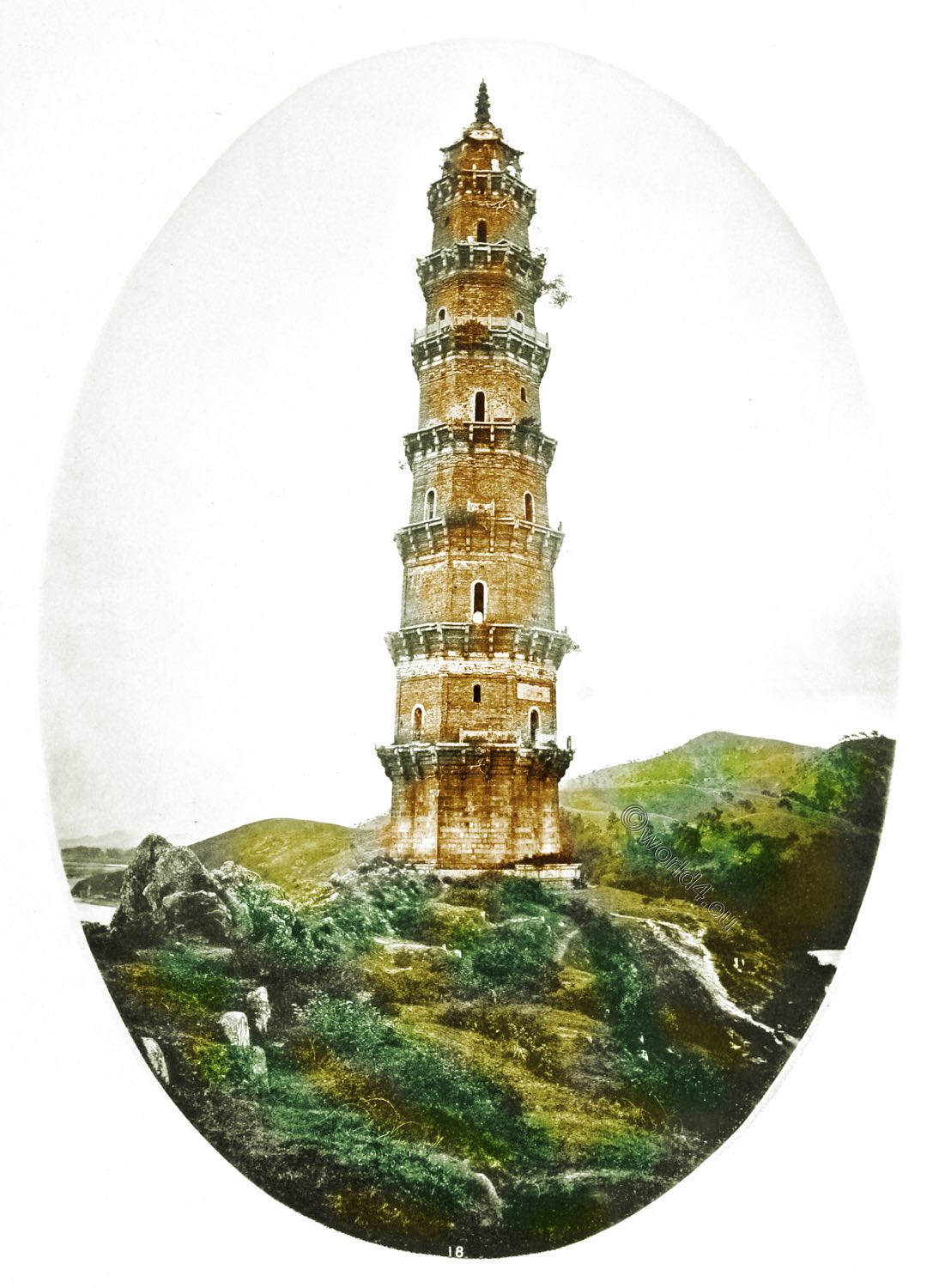The Palisades, also: New Jersey Palisades, Hudson River Palisades, are a series of steep cliffs along the west bank of the lower Hudson River in the Gateway Region of New Jersey and downstate New York in the United States. The Palisades are among the most dramatic geological formations in the New York City area. They form a canyon for the Hudson north of the George Washington Bridge, and offer spectacular views of the Manhattan skyline. The term “palisade” is derived from the Latin word palus (meaning pole).

THE PALISADES — HUDSON RIVER.
by W. H. Bartlett
The first feature of the celebrated banks of the Hudson, which arrests the eye of the traveller after leaving New York, is this singular wall of rock, extending as far onward as he can see, and forming a bold barricade against the river on the side of New Jersey. This singular precipice varies in height from fifty to two hundred feet, and presents a naked front of columnar strata, which gives it its descriptive name. The small sloops which lie along under the shore, loading with building stone from its base, and an occasional shed, diminished to the size of a dog-kennel, across the breadth of the river, are the only marks of life and habitation it presents to the traveller’s eye.
“With most persons, to mention the Palisades is to recall only the confusion of a steamer’s deck, just off from the wharf, with a freight of seven or eight hundred souls hoping to “taketea” in Albany. The scene is one of inextricable confusion, and it is not till the twenty miles of the Palisades are well passed, that the bewildered passenger knows rightly whether his wife, child, or baggage, whichever may be his tender care, is not being left behind at the rate of fifteen miles in the hour.
I have often, when traveling alone, (for “reflection with folded arms” consorts only with the childless and baggageless bachelor), I have often flung my valise into a corner, and sure that the whole of my person and personal effects was under way, watched the maniform embarrassments and troubles that beset the uninitiated voyager on the Hudson. Fifteen minutes before the starting of the boat, there is not a passenger on board ; ” time is moving,” and the American counting it as part of the expense, determines to pay only “on demand.”

He arrives on the narrow pier at the same instant with seven hundred men, ladies, and children, besides lapdogs, crammed baskets, uncut novels, and baggage for the whole. No commissioner in the world would guarantee to get all this freight on board in the given time, and yet it is done, to the daily astonishment of newspaper hawkers, orange-women, and penny- a-liners watching for dreadful accidents. The plank is drawn in, the wheels begin to paw like foaming steeds impatient to be off, the bell rings as if it was letting down the steps of the last hackney-coach, and away darts the boat, like half a town suddenly slipping off and taking a walk on the water.
The “hands,” (who follow their nomenclature literally, and have neither eyes nor bowels) trip up all the little children and astonished maids, in coiling up the hawser; the black head-waiter rings a hand-bell as if he were crazy, exhorting “them passengers as hasn’t settled to step to the Cap’n’s office, and settle,” and angry people who have lost sight of their portmanteaus, and selfish people who will not get up to let the young gentleman see if his penny trumpet is not under them, play in a real-life farce better than Keeley or Liston.
A painted notice and a very fat black woman in the door-way, inform the gentleman who has not seen his wife since the boat started, and is not at all sure that she is on board, that “no gentleman is permitted to enter the ladies’ cabin,” and spite of his dreadful uncertainty, he is obliged to trust to this dark Hebe to find her, among three hundred ladies, by description, and amuses all the listeners with his inventory of her dress, features, and general appearance.
The negress (a black woman) disappears, is called twenty ways in twenty seconds, and an hour after, the patient husband sees the faithless messenger pass with a glass of lemonade, having utterly forgotten him and the lady in the black bonnet and grey eyes, who may be, for ought he knows to the contrary, wringing her hands at that moment on the wharf at New York.
By this time, the young ladies are tired of looking at the Palisades, and have taken out their novels, the old gentlemen are poring over their damp newspapers, and the captain has received his fourteen hundred or two thousand dollars, locked up his office, and gone up to smoke with the black funnel and the engineer.
The broad waters of the Tappan Sea open before the flying cut-water those who have never been up the river before, think of poor André as they pass Tappan and Parrytown, and those who love gentle worth and true genius begin to look out for Sleepy Hollow, and the house of “Washington Irving. It is a quiet little spot, buried in trees, and marked with an old Dutch vane.
May his latter days, when they shall come, find there the reverence and repose which are his due!
Source: American Scenery; or, Land, Lake, and River Illustrations of Transatlantic Nature. From Drawings by W. H. Bartlett. Engraved by R. Wallis, J. Cousen, Willmore, Brandard, Adlard, Richardson, &c. The Literary Department By N. P. Willis, Esq. London: George Virtue 26, Ivy Lane. 1840.

Continuing
Discover more from World4 Costume Culture History
Subscribe to get the latest posts sent to your email.






